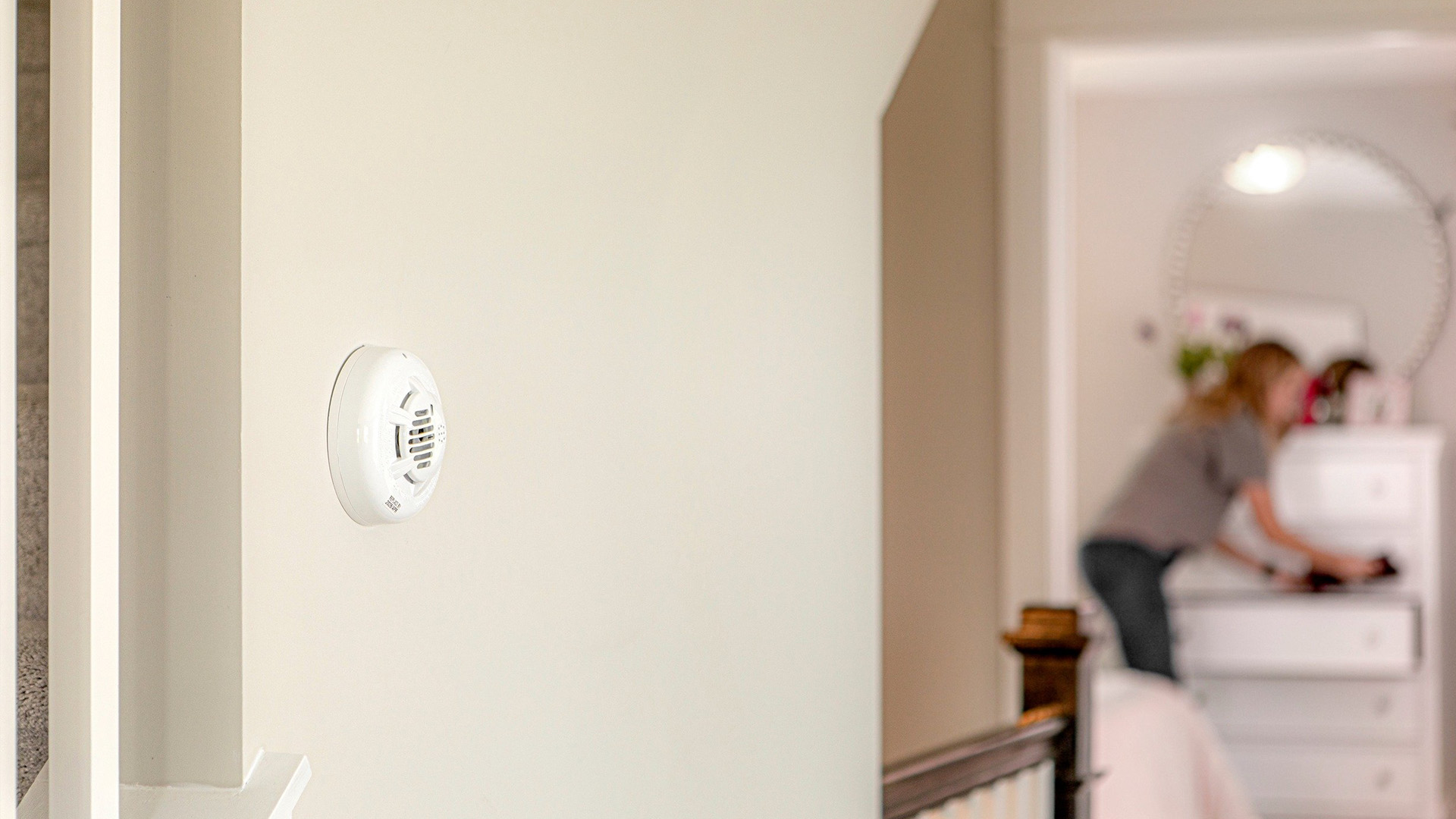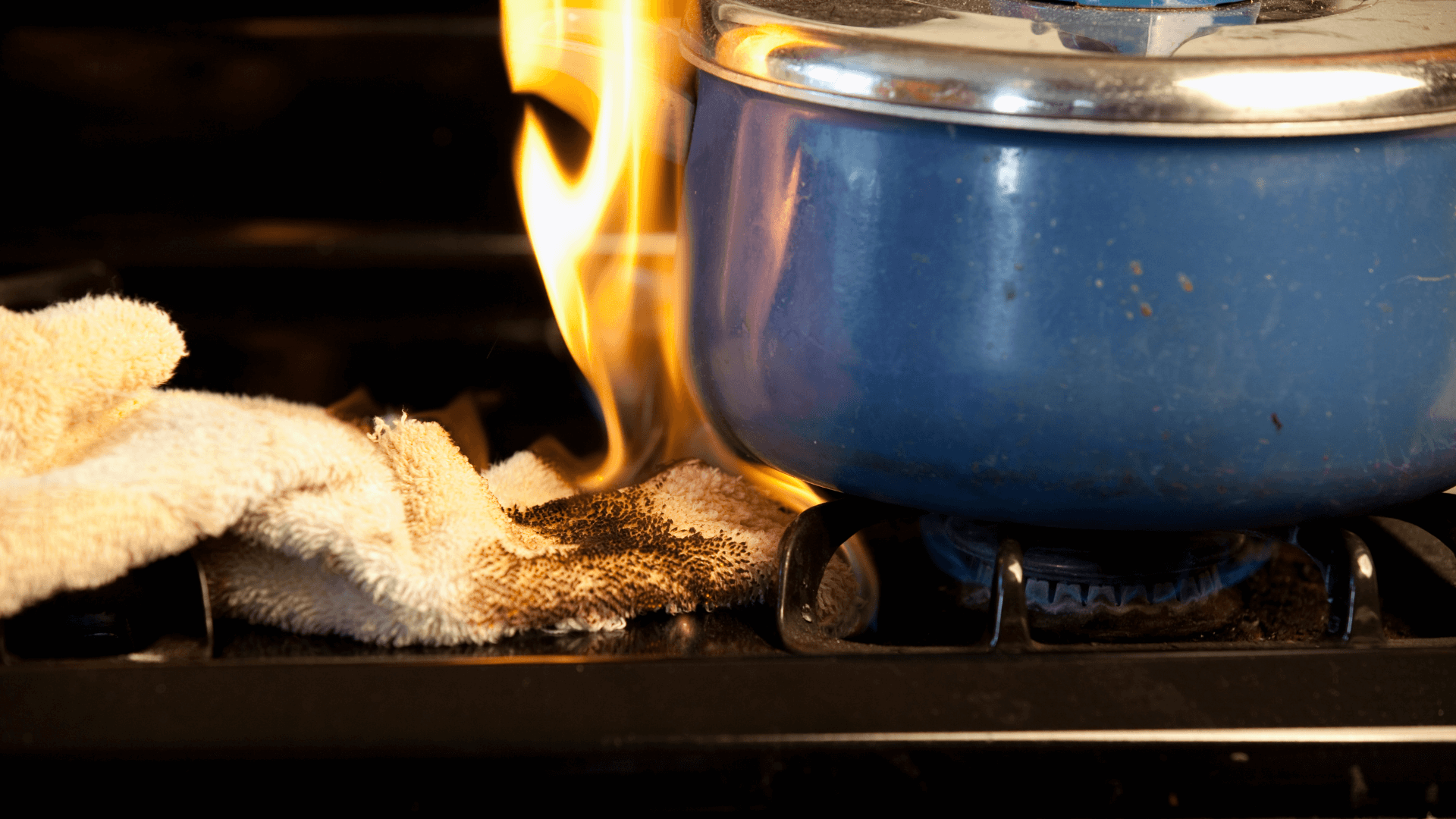The holidays can be a wonderful time to celebrate with family and friends and be grateful for the good things in life, but occasionally an exciting time of food and fellowship turns into a disaster: cooking fires.
Thanksgiving has more cooking-related home fires than any other day of the year, with more than three times the daily average, according to the National Fire Protection Association. Christmas Day and Christmas Eve rank second and third with nearly twice the daily average. Unattended cooking is the biggest contributor to cooking fires and fire deaths. Overall, cooking causes 49% of all reported home fires and 42% of home fire injuries, and it’s the second leading cause of home fire deaths.
Deep fryers in particular are the leading cause of cooking fire deaths. For many families, a deep fried turkey is a Thanksgiving or Christmas tradition. The crispy skin and juicy meat is a great complement to other traditional holiday foods. If you don’t want to forego a delicious deep fried turkey this year, make sure you are cooking it safely, so your holiday doesn’t end in a tragic accident.
Whether you fry your turkey or cook it another way, you can rely on CPI Security to alert the authorities if anything goes awry. With the CPI Security Smart Smoke Detector, our 24/7 monitoring team will respond in real time to get you help when you need it most.
In this article we’ll cover topics such as:
- The dangers of deep frying a turkey
- Safety tips for deep frying a turkey
- How to deep fry a turkey
- How long to thaw a frozen turkey
- What temperature to fry a turkey
- How much oil you need to fry a turkey
- Deep frying a 25lb turkey
- How long to deep fry a turkey per pound
- Three dry rub recipes for a delicious fried turkey
Turkey Frying Safety Tips
If you plan to fry a turkey, keep the following safety tips in mind to ensure you end up with a delicious turkey, rather than an injury or house fire.
- Never use an outdoor turkey deep fryer indoors, or an indoor deep fryer outdoors.
- When frying a turkey outside, keep your fryer set up away from decks, exterior walls, patio furniture, shrubbery and anything else that could catch fire.
- Have a fire extinguisher rated for grease fires nearby.
- Set up your fryer on a level, non-flammable surface, and never move it while it’s in use.
- Don’t fry a turkey in the rain or snow. If it’s cold outdoors, prepare to dress warmly so you can stay with your turkey the entire time it’s cooking. Never leave a turkey fryer unattended.
- When using a propane fryer, keep at least two feet between the tank and the burner.
- Generally speaking, smaller turkeys are safer to fry, especially because there is less risk of oil spilling out. Small turkeys also tend to taste better as they cook more evenly. If you opt to cook a bigger turkey weighing 14-15lbs or more, you’ll need to take it apart and fry the legs and thighs separately. Standard turkey fryers hold about 18 pounds, so don’t plan on deep frying an entire 25lb turkey at once.
- Keep children and pets out of your frying area.
- Never drink alcohol while using a turkey fryer.
- Use a meat thermometer to make sure your turkey is fully cooked. Your turkey is done when the dark meat reaches an internal temperature of 175-180 degrees and the white meat reaches an internal temperature of 165-170 degrees.
- Thoroughly read all the directions and warnings for your turkey fryer before you begin.
- Make sure you have working smoke detectors inside your house before cooking any holiday meal, such as the CPI smart smoke detector that detects fires and alerts the homeowner and the monitoring team who will contact emergency dispatchers.
How to Deep Fry a Turkey
Set up your turkey fryer
Choose an open spot to set up your turkey fryer and propane tank, at least 10 feet away from any other objects. This needs to be a flat, level area, and should not be on anything flammable such as wood or asphalt. Assemble the fryer according to the instructions, then attach the fryer’s gas line to your propane tank and set the tank at least two feet away from the fryer.
To figure out how much oil to use in the fryer, place the turkey in the fryer pot, then add water until the turkey is covered by about half an inch. The level of water should be several inches below the top of the pot. Lift the turkey out, letting any excess water drain back into the pot. Then, either mark the water line or measure the amount of water left in the pot. Dump out the water, dry the pot completely, then add the equivalent amount of oil back to the pot. You’ll want to use oil with a high smoke point such as peanut oil, canola oil, vegetable oil, safflower oil, rice bran oil or corn oil.
If you opt to use an indoor fryer, set up is much simpler and only requires filling the fryer with oil to the pre-marked level.
Prepare your turkey
If you’re using a frozen turkey, begin thawing it several days in advance. The safest way to thaw a turkey is in the refrigerator, allowing about one day of thaw time for every 4-5 pounds. When you’re ready to prepare your turkey, unwrap it, remove the neck and giblets from the body cavity, then check the cavity for any hidden ice chunks. Be sure to look in the joints and around the ribs. Cut off any excess fat, then dry the bird completely with paper towels. Excess water, ice or pockets of moisture can cause the oil to splatter dangerously. If your turkey is bigger than 14 or 15 pounds, separate the legs and thighs so you can fry them separately. Otherwise, tuck the wings behind the body and use cooking twine to tie the legs together. This will help the turkey fry more evenly.
Season your turkey
Now your turkey is ready for any seasonings, dry rubs, injected flavorings or marinades. Dry brines and dry rubs are generally the best choice to avoid moisture that can cause dangerous oil splatters. Season the turkey the day before cooking if possible, as it allows the turkey to absorb the flavors while it sits in the fridge, and it helps dry the turkey out so you get a crispier skin.
If you don’t have a specific fried turkey recipe in mind, check out our three favorite ways to season a deep fried turkey below!
Fry your turkey
Put on a heat-protective apron and gloves, and preheat your oil until it reaches 350 degrees according to a fry thermometer attached to the side of the pot or an instant read thermometer. Allow the turkey to come to room temperature while the oil heats up. Once the oil is hot enough, turn off the burner and put the basket in the oil for about 30 seconds. Preheating the basket like this keeps the turkey skin from sticking to it. If your fryer uses a hanger instead of a basket, you don’t need to preheat the hanger. Pull the basket out, place the seasoned turkey in it, and lower the turkey into the oil slowly and carefully without dropping it, then turn the burner back on.
Cook your turkey for about 4-5 minutes per pound. The turkey is ready to come out when the dark meat reaches an internal temperature of 175-180 degrees and the white meat reaches an internal temperature of 165-170 degrees.
Once the turkey is finished, turn off the burner, then carefully pull the bird out of the fryer and place it on a rack in a pan or on paper towels so the oil can drain off. Tent the turkey with foil and let it rest for about 20 minutes before carving.
Cooking a turkey in an indoor turkey fryer follows a similar process, but it only needs to cook for about 3-4 minutes per pound.
Clean up the turkey fryer
Once the oil and the pot have fully cooled, transfer the oil to a container to reuse, or pour it into an empty can to throw away. Never pour oil down the drain. Use a spatula to scrape off any food stuck to the side of the fryer, then wash it with soap and water.
Three Delicious Recipes for Fried Turkey
Dry rubs are a great option for frying a fantastic turkey. Select a dry rub recipe below, and mix all the ingredients together, then divide the mixture into three equal parts to rub on each area of the turkey. After you prepare the dry rub, loosen up the skin, then rub it under the skin, inside the cavity and over the outside. Then refrigerate it for 18-24 hours.
Basic Fried Turkey Dry Rub
- 2 tablespoons minced fresh thyme
- 4 teaspoons kosher salt
- 1 tablespoon sugar
- 1 tablespoon garlic powder
- 1 tablespoon paprika
- 1 tablespoon coarsely ground pepper
Creole Fried Turkey Dry Rub
- 25 medium whole bay leaves, ground in a spice grinder
- 3 tablespoons Creole seasoning
- 1 tablespoon dried thyme
- 1 tablespoon dried oregano
- 2 teaspoons garlic powder
- 1 1/2 teaspoons black peppercorns
Sweet and Savory Fried Turkey Dry Rub
- 1 tablespoon kosher salt
- 1 tablespoon brown sugar
- 1 teaspoon paprika
- 1 teaspoon black pepper
- 1 1/2 teaspoons dried thyme
- 1 1/2 teaspoons dried rosemary
- 1 teaspoon dried sage
- 1/2 teaspoon garlic powder
- 1/2 teaspoon onion powder
We hope you enjoy a happy, safe holiday season!




